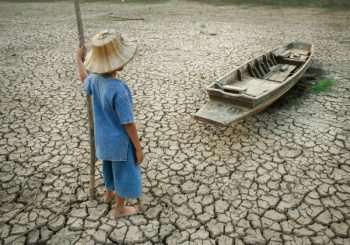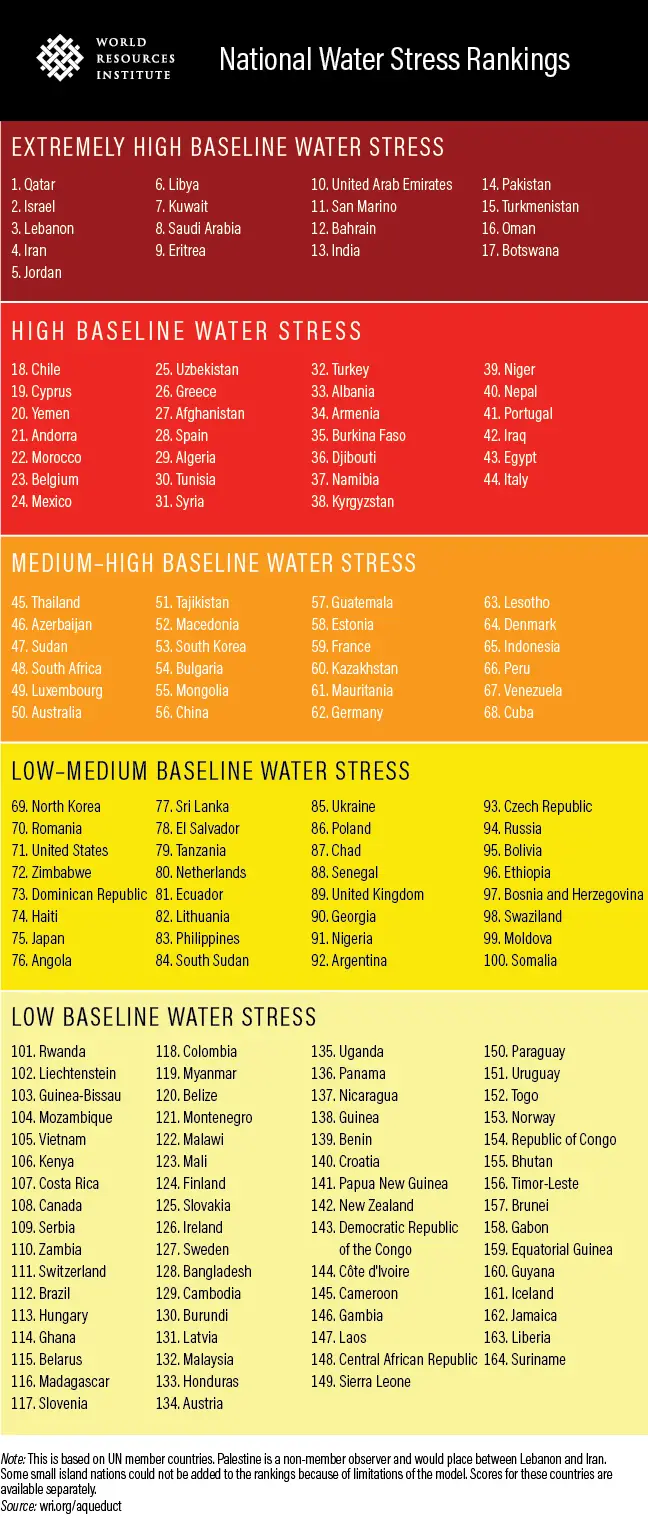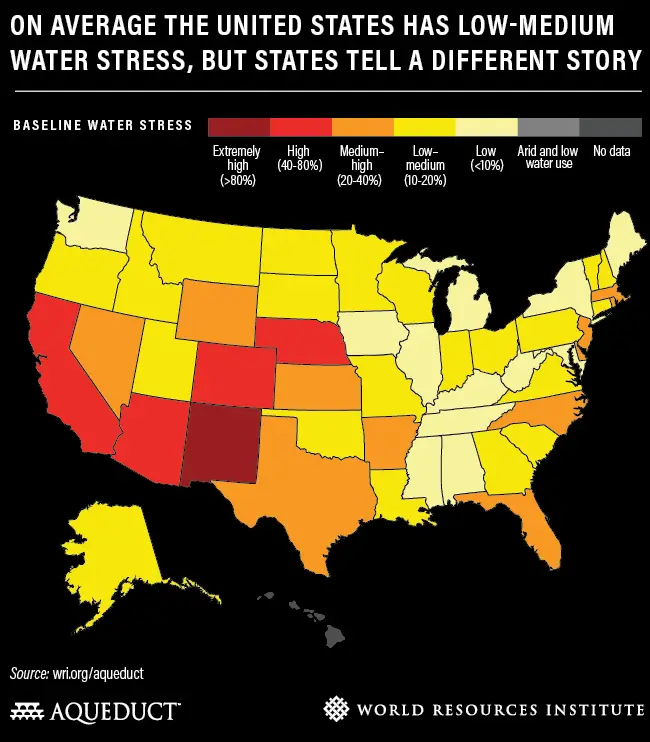By Amelia Harris
Staff Writer for Wake Up World
It’s no secret that we are experiencing a world water crisis. But the situation may be more critical than we thought. A new list of 17 countries facing extremely high water stress offers insight into this issue.
17 Countries With Extremely High Water Stress
The World Resources Institute is a nonprofit organization whose goal is to help people live sustainably and protect the environment. The organization recently released a list of 17 countries facing extremely high water stress. These 17 countries represent 25% of the world’s population. (1, 2) In order of severity, they are:
- Qatar
- Lebanon
- Israel
- Iran
- Jordan
- Libya
- Kuwait
- Saudi Arabia
- Eritrea
- United Arab Emirates
- San Marino
- Bahrain
- India
- Pakistan
- Oman
- Turkmenistan
- Botswana
For a country to be considered under extremely high water stress, it must be using 80% of its available surface and groundwater annually. These water sources are feeding municipalities, agriculture, and industry. (1)
If a country is using this much of its water, a negative change in availability can have dire consequences. And because of rising temperatures and population expansion, droughts and higher water withdrawals are projected to increase. (1)
The Impacts Of Water Scarcity
Water scarcity can have far-reaching consequences. Of the 17 countries identified with extremely high water stress, 12 are located in the Middle East and Northern Africa. Experts have identified that water stress can intensify conflicts and migration in these regions. And because water is used to grow crops as well as power industry, food insecurity and financial instability are other possible realities. (1)
Vanishing Groundwater
Places that have relied on groundwater for years are now finding that it’s running out. Mexico City is sinking because it’s using groundwater so quickly. Dhaka, Bangladesh has to draw water from aquifers that are hundreds of feet deep to supply its residents and many garment factories. (3, 4)
India, whose population is three times larger than all 16 of the other countries on the list combined, has widespread water issues. But the situation in Chennai, India’s sixth-largest city, is particularly challenging. The city has run out of groundwater, and the four reservoirs that provide Chennai with water have run dry. And to make matters worse, 2019’s late monsoon season means more time between the replenishing these reservoirs. (3, 4)
Water Stress In The United States
The World’s Resources Institute ranked the United States as having low-medium baseline water stress. But the U.S. is a large country with diverse ecosystems, and water scarcity varies from state to state and city to city. In particular, the Southwest, western Great Plains, and some of the Northwest have water supplies that can’t keep up with the demands of their citizens. (2, 5)
Much of the U.S. has experienced a drop in rainfall in recent years, leading to widespread drought. Water is a limited resource in places like California, where 66% of its agriculture faces extremely high water stress. Drought impacts two-thirds of Texas. And there are fears of a modern Dust Bowl in Colorado. (6)
It is hard to tell if these conditions will improve, as rainfall rates become more unpredictable in the coming years. And as average temperatures rise, soil dries out. So even if more rain does fall, it will remain challenging for farmers to water crops and feed their herds. (6)
Steps To Take For A Water-Secure Future
With a global water crisis looming, many are looking for small-scale actions they can take to be a part of the solution. On a cooperative scale, countries, states, and cities can evaluate their water usage. They should identify ways to decrease demand and invest in water efficiency systems. They can plan for droughts by collecting rainwater, refurbishing unused wells, and cleaning lakes and wetlands. Companies are also responsible for assessing and mitigating their water usage. (3, 6)
Additionally, individuals can take steps to conserve water in their homes and practices. These actions include:
- Never leave faucets running unnecessarily (washing dishes, brushing teeth, shaving, etc.)
- Take shorter showers – set a timer to get the hang of showering efficiently
- Fix any leaks as soon as you discover them
- Switch to low-flow toilets and shower heads
- Harvest rainwater for non-drinking functions, like watering the garden or irrigating your yard. (7)
- Repurpose clean water from the sink or shower (waiting for the water to get hot) for plants
- Grow or purchase foods that require less water to grow. For instance, millet needs far less water than rice. (3)
- Buy clothing made from flax, linen, or monocel, which is a bamboo material that uses a reduced amount of water and toxic chemicals. Cotton takes an incredible amount of water to grow, so purchasing clothing that uses alternative fabrics is a great way to conserve water. (8)
As with any resource, consciously doing your part to conserve water where possible goes a long way. It may seem like a small contribution, but multiply that by 7.5 billion people, and the amount of water saved could make all the difference.
Article sources:
- https://www.wri.org/news/2019/08/release-updated-global-water-risk-atlas-reveals-top-water-stressed-countries-and-states
- https://www.wri.org/applications/aqueduct/country-rankings/
- https://www.nytimes.com/interactive/2019/08/06/climate/world-water-stress.html
- https://edition.cnn.com/2019/06/20/world/chennai-satellite-images-reservoirs-water-crisis-trnd/index.html
- https://www.globalchange.gov/browse/multimedia/water-stress-us
- https://www.wri.org/blog/2014/04/water-stress-magnifies-drought-s-negative-impacts-throughout-united-states
- https://www.conserve-energy-future.com/Advantages_Disadvantages_Rainwater_Harvesting.php
- https://goodonyou.eco/fashion-and-water-the-thirsty-industry/
About the author:
Amelia Harris is a writer and eco-activist, interested in health and all things esoteric, with a passion for sharing good news and inspiring stories. She is a staff writer for Wake Up World.

If you've ever found value in our articles, we'd greatly appreciate your support by purchasing Mindful Meditation Techniques for Kids - A Practical Guide for Adults to Empower Kids with the Gift of Inner Peace and Resilience for Life.
In the spirit of mindfulness, we encourage you to choose the paperback version. Delve into its pages away from screen glare and notifications, allowing yourself to fully immerse in the transformative practices within. The physical book enriches the learning process and serves as a tangible commitment to mindfulness, easily shared among family and friends.
Over the past few years, Wake Up World has faced significant online censorship, impacting our financial ability to stay online. Instead of soliciting donations, we're exploring win-win solutions with our readers to remain financially viable. Moving into book publishing, we hope to secure ongoing funds to continue our mission. With over 8,500 articles published in the past 13 years, we are committed to keeping our content free and accessible to everyone, without resorting to a paywall.










